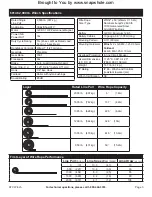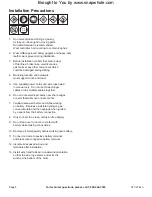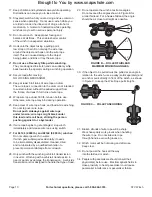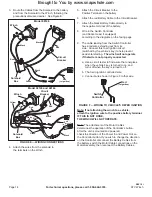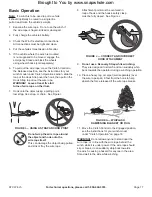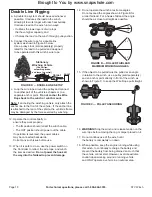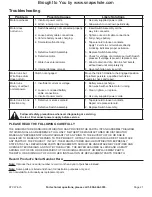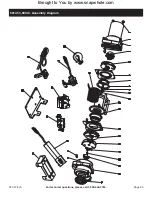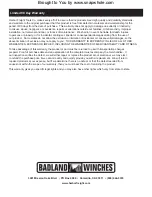
Page 13
For technical questions, please call 1-800-444-3353.
ATV Winch
3. Before drilling, verify that the installation
surface has no hidden components or
structural pieces that will be damaged.
NOTE:
This winch can generate extreme forces. Select
a location that can withstand the rated capacity without
damage or weakening. Steel reinforcement plates may
be needed or a certified welder may need to weld on
additional bracing depending on the mounting location.
4. Drill holes appropriate for the hardware
at the marked locations.
5. Install the winch using hardware described under
Winch Specifications on pages 3 to 5.
ounting Winch Components
1. Mount solenoid box, switch controller, and
socket lead in proper locations so that:
a. Winch components are close enough to each
other to allow wires to be routed properly.
b. Vehicle component operation is not interfered with.
c. Vehicle components are not damaged
by drilling or driving screws.
d. Winch components will not be damaged by
stresses caused by vehicle operation.
2. Mark the locations where the screw holes will be.
3. Verify that the installation surface has no
hidden components or structural pieces
that will be damaged before drilling.
4. Drill pilot holes for the mounting screws.
5. Secure in place with mounting screws.
Wiring
TO PREVENT SERIOUS INJURY FRO
EXPLOSION DUE TO SPARKING AT THE
BATTERY CONNECTION:
Disconnect the Battery Cables before
making other wiring connections.
TO PREVENT SERIOUS INJURY FRO
LEAKING BATTERY ACID:
Do not use a dirty, corroded or leaking
battery. Only use a 12V automotive
(or equivalent) battery, in good condition.
1. Plan a route for the wiring from the point of the
vehicle where the winch will be mounted, or
used, to the battery. This route must be secure,
out of the way of moving parts, road debris, or
any possibility of being damaged by operation
or maintenance of the vehicle. For example,
you may wish to route the wires under the vehicle,
attaching it to the frame using suitable fasteners.
Do not attach the wires to the exhaust system,
drive shaft, emergency brake cable, fuel line, or any
other components which may create damage the
wiring through heat or motion, or create a fire hazard.
2. If you drill through the bumper or any part of the body
to route the wires, be sure to install a rubber grommet
in the hole to prevent fraying of the wires at that point.
Brought to You by www.snapwhole.com



